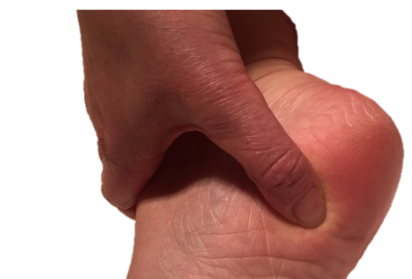What is shock wave therapy?
Shock wave therapy involves the controlled application of shock waves to tissues of the body to reduce pain and promote healing. A shock wave is a sound wave characterised by extremely fast pressure vibrations.
When a shock wave enters body tissues, the pressure vibrations cause rapid compression and stretching of the tissues. This rapid compression and stretching of tissues has been suggested to have the following beneficial effects:
**Pain reduction (known as analgesia) – through inhibition of nerves that cause pain**
**Aiding healing of soft tissues – through promotion of blood vessel formation**
What conditions is shock wave therapy used for?
Shock wave therapy has been shown to be an effective treatment for soft tissue injuries, particularly chronic (pain greater than 3 months that has not responded to rest and other conservative treatments) injury of the tendons and fascia. Subsequently, shock wave therapy is recommended for the following common conditions:
- Plantar heel pain (heel spur syndrome, plantar fasciitis)
- Achilles tendinopathy (Achilles tendinitis)
How many treatments are required?
Shock wave therapy has been shown to be effective when applied weekly for 3 to 5 weeks. Each treatment takes approximately 10 minutes.

Does treatment with shock wave therapy cause pain?
Shock wave treatment is non-invasive and well-tolerated. There may be some discomfort during treatment, depending upon the level of pain that a person is already experiencing in the area. However, since the duration of treatment is about five minutes, most people are able to tolerate this discomfort.
Most people will experience an immediate relief of pain following treatment. However, within 2 to 4 hours after treatment, they may experience some soreness in the treated area. This soreness has been reported as being very tolerable and it may last from a few hours to several days. Generally, shock wave therapy allows patients to return to activities of daily life within 2 days with immediate return to most jobs and normal daily shoe wear.
Are there risks with shock wave treatment?
Shockwave treatment is regarded as a safe treatment. Side-effects are uncommon, occurring in less than 5% of people receiving this treatment (Buchbiner et al., 2002). The most common side effects are pain following treatment, skin redness, bruising, and swelling and these are short-term (Buchbinder et al., 2002; Gollwitzer et al., 2007).
Will my private health insurance cover this treatment?
Private health insurers differ. To check with your insurance you will need to see what rebate is given on the item numbers F012 and F145.
References
Buchbinder R, et al. Ultrasound-guided extracorporeal shock wave therapy for plantar fasciitis: a randomized controlled trial. JAMA. 2002;288(11):1364-72.
Gollwitzer H, et al. Extracorporeal shock wave therapy for chronic painful heel syndrome: a prospective, double blind, randomized trial assessing the efficacy of a new electromagnetic shock wave device. J Foot Ankle Surg. 2007;46(5):348-57.
Rompe JD, et al. Shock wave therapy for chronic plantar fasciopathy. Br Med Bull. 2007;81-82:183-208.
Yin MC, et al. Is extracorporeal shock wave therapy clinical efficacy for relief of chronic, recalcitrant plantar fasciitis? A systematic review and meta-analysis of randomized placebo or active-treatment controlled trials. Arch Phys Med Rehabil. 2014;95(8):1585-93.
Call Northern Foot Clinic today to arrange an appointment with a Podiatrist and see if shock wave therapy is appropriate for you — (03) 9004 2342
